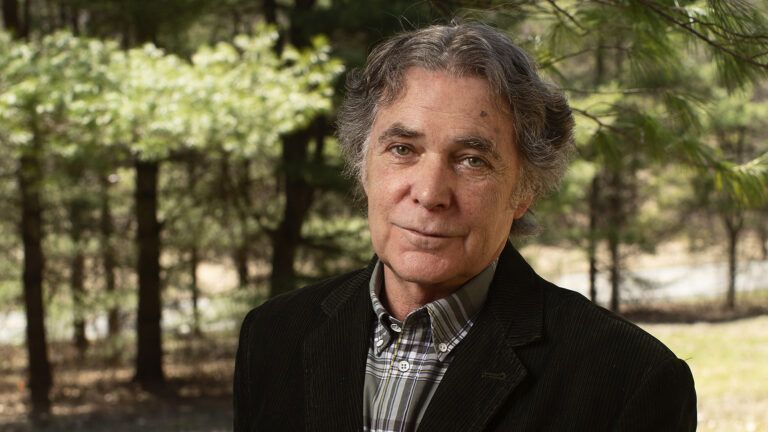I admit, I’m a nostalgic guy. Whenever I need a break from my work, I go to YouTube and watch an old video like James Taylor’s “You’ve Got a Friend.”
Both the song and the singer, with his long hair and mustache, transport me back to 1975, to Ann Arbor and the University of Michigan, where I studied for my Ph.D. in psychology. But I never imagined my YouTube habit as anything more than a pleasurable distraction.
Recently, though, I’ve been doing research on “peak experiences,” surveying people about their most joyful, life-changing events. One man zeroed in on a park where he and his friends hung out as kids.
They recently revisited it together, walking around the lake and the ball fields, observing how things had changed and sharing stories about the past.
“It made me feel grateful for my friendships,” the man wrote. “Ever since the trip down memory lane, I’ve felt happier about my life.”
Could it be possible, I wondered, that simply recalling happy memories can be almost as powerful as having a positive new experience? Was my YouTube habit benefiting me more than I first thought?
Certainly, nostalgia hasn’t always been viewed as a good thing. For years, the psychological establishment believed it was simply a form of escapism.
But as I discovered, and a growing body of psychological research confirms, waxing nostalgic from time to time doesn’t trap us in the past—it is healthy for our body, mind and spirit in the present.
Nostalgia Keeps Us Grounded
In his 1979 book, Yearning for Yesterday, sociologist Fred Davis noted that his research found nostalgia allowed people to “maintain their identity in the face of major transitions like childhood to pubescence, adolescence to adulthood, single to married life, and spouse to parent.” In other words, it helped people stay true to themselves despite huge life changes.
Today, technological and social change happens at a rapid pace, work and travel take us farther from home than ever before, and new information bombards us constantly. It’s easy to feel lost.
A high-powered Manhattan executive may get caught up in the rat race, only to catch a scent of horses in Central Park and be reminded of her idyllic beginnings growing up on a Midwestern farm.
Wherever we find ourselves, nostalgia helps bring us back to our roots, back to the things that are most important.
Give it a try. When you feel confused, adrift, out of place, turn off the computer and the TV for an hour or two and read a favorite book from your high school days, or look through a scrapbook or wedding album. Most likely, you’ll feel restored and refocused.
Nostalgia Gives Us Perspective
“Those who forget the past are doomed to repeat it,” said the philosopher George Santayana. Nostalgia provides a lens through which to view past mistakes and misfortunes.
Take the TV show Mad Men, famous for its edgy take on the 1960s. This isn’t the wholesome, innocent world of Leave It To Beaver. People smoke and drink in the office, rude treatment of women is the norm and an early episode even shows a child playing with a plastic bag over her head.
These things shock us now. By remembering our more reckless behavior and contrasting it with who we are today, we can more clearly appreciate how far we’ve come. It can also make us think twice about the things we do so casually today—revealing so much of our lives on Facebook, for example—reminding us to err on the side of caution.
A branch of psychology called narrative therapy prompts patients to tell stories about their lives in vivid detail—including their hardships, defeats, losses and disappointments—in order to bring focus to the silver lining, the lessons learned.
Research has shown that people who can see the positive aspects of the things that have caused them pain usually have better mental and physical health as they get older.
Nostalgia Helps Us Get in Touch With Ourselves
I once treated a man for loneliness and depression. He was in his late forties, lived alone and aside from phone calls to his elderly mother, he led an almost totally isolated existence.
I encouraged him to go to a singles dance or join a book club, but his shyness and self-defeating attitude always stopped him. I was stymied.
Then one evening he arrived for our session with a bounce in his step. “I had an amazing dream last night,” he told me.
He dreamt that he was sitting on a beautiful beach under blue skies, and “Desperado,” the 1970s hit by the Eagles, was playing.
“You know,” he said, “when I woke up, I felt happier than I have in years.” The song reminded him of a college summer when he shared a beach house with friends. “Everyone accepted me for exactly who I was,” he said.
He laughed and joked about his adventures that summer, and it was hard to believe this was the same lonely, depressed man.
Our conversation continued the following week. Eventually, the happy memory motivated him to join a volunteer organization, where he made new friends. Thinking back on the past helped him find a key to his future.
In a 2008 study, an international team of researchers found that focusing on happy memories from their childhood enabled people to feel more connected with family and friends.
A 2006 study discovered that a group of people who spent just a few minutes writing about a past event were more cheerful afterward than a group who wrote about a typical day in the present.
Both studies show that people with high resilience—the ability to bounce back quickly from stress and setbacks—are especially adept at using nostalgia to put themselves in an upbeat frame of mind.
Nostalgia Boosts Our Memory
My mother spent her last days in home hospice care. Once a music teacher and accomplished pianist, she was too frail to play piano, and seemed listless and distant. But she perked up when my brother and I put on music for her.
“Chopin!” she said, hearing a classical music CD. The song “I Could Have Danced All Night” brought back fond memories of our father. “My Fair Lady was his favorite musical,” Mom said, and she told me a wonderful story about meeting Dad at a teachers’ ball in the early fifties.
Family photos triggered other memories. There was one shot of us at a nondescript pool I couldn’t identify. But Mom knew. “Our trip to the Catskills!” she exclaimed. She held my brother’s hand and mine tenderly. These memories seemed to imbue her with strength, if only for a few minutes.
In 2009, researchers at the University of California-Davis mapped the brain activity of young adults while they listened to well-known songs.
It turns out that the region of the brain responsible for our long-term memory also serves as a hub that links familiar music and images with emotions. A seemingly forgotten memory embedded deep within our minds may rise to the surface, along with the feelings attached to it, when we hear an old tune or see a childhood photograph.
Many assisted-living centers use popular music and vintage movie posters, even artifacts like manual typewriters and rotary telephones, to jog memories of patients with dementia and Alzheimer’s.
Family members create “memory boxes,” filled with photos and objects related to work or hobbies, that awaken their loved one’s dormant memories.
Nostalgia Connects Us Spiritually
The Hebrew Scriptures remind us to honor the past. Take Deuteronomy 8:10-19: “Be careful that you do not forget the Lord your God, who brought you out of Egypt, out of the land of slavery.” Otherwise, the passage warns, “you will surely be destroyed.”
Every year on the Jewish holiday of Passover, I sit down with my family for the Seder, the festive meal at which we follow the biblical commandment to tell the story of our people’s deliverance.
It’s not only a way of glorifying God, it’s also a way of remembering that we must not take our freedom for granted. A plate at the center of our table holds six special foods, each of which represents a part of the story of Exodus and the Jewish people.
For instance, charoset—a spread of chopped nuts, apples and wine—symbolizes the mortar our ancestors used when they were forced to build Pharaoh’s cities. Horseradish—by its taste—recalls the bitterness of slavery. And a hardboiled egg reminds us of our people’s resilience, rebirth and renewal.
Why all of these rich, sensory symbols? Jewish tradition tells us that it’s not enough to simply recite the Passover story. Instead, we must relive it—through all of our senses—as though we had experienced enslavement and liberation for ourselves. Those ancient memories must become our very own for us to truly appreciate all of God’s miracles.
I think that our biblical ancestors were onto something. When I watch those old James Taylor videos on YouTube and rewind my life to my grad school days, I can’t help but replay the blessings that have come in the years since—a successful psychology practice, a happy marriage, many friends and the joy of becoming a father. And I feel a renewed appreciation for the One who bestowed them.
Did you enjoy this story? Subscribe to Guideposts magazine.





